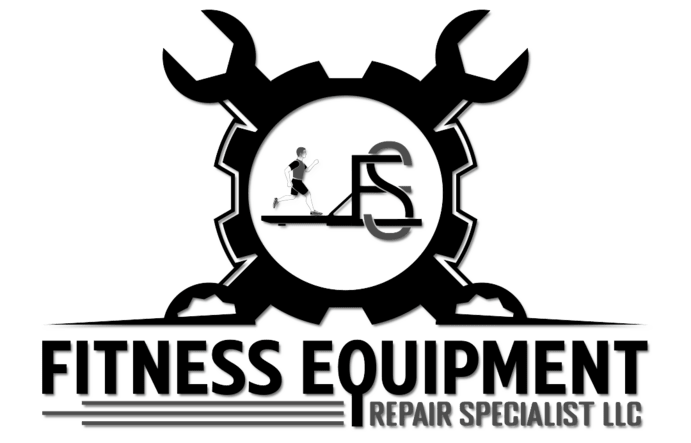
Most Common Gym Equipment Failure and How to Prevent Them
August 10, 2024
When To Replace & Repair The Broken Gym Equipment
August 13, 2024Nowadays, there has been an increased focus on cleanliness and hygiene, particularly in environments where multiple people share equipment, such as gyms and fitness centers. One area that often gets overlooked, however, is the importance of regularly cleaning exercise equipment. Whether you’re using a public gym or working out at home, surface cleaning your exercise equipment is essential for a variety of reasons, from ensuring your health and safety to maintaining the longevity of your gear. In this post, we’ll explore why you need to surface clean your exercise equipment and the best practices to keep it in top condition!
Preventing the Spread of Germs and Infections
One of the most critical reasons for surface cleaning exercise equipment is to prevent the spread of germs and infections. Gyms and fitness centers are high-traffic environments where many people come into contact with the same equipment throughout the day. Each time someone uses a piece of equipment, they leave behind sweat, skin cells, and potentially harmful bacteria or viruses.
Germs on Gym Equipment:
- A study by FitRated found that exercise equipment, particularly treadmills, stationary bikes, and free weights, can harbor more bacteria than common household items, including toilet seats.
- Equipment surfaces can be contaminated with pathogens like Staphylococcus aureus (commonly known as Staph), which can cause skin infections and other health issues.
Regular cleaning helps to eliminate these germs and reduce the risk of spreading infections between users. This is particularly important in a public gym setting, but it’s equally crucial for home gyms, especially if the equipment is shared among family members or guests.
Enhancing Exercise Equipment Longevity
Exercise equipment is a significant investment, whether you’re outfitting a commercial gym or a personal workout space. Proper maintenance, including regular surface cleaning, can significantly extend the lifespan of your equipment.
How Dirt and Sweat Damage Equipment:
- Sweat contains salts and minerals that, when left on surfaces, can corrode metal components, damage electronics, and degrade rubber or plastic parts.
- Dirt and dust can accumulate in the crevices of your equipment, leading to mechanical issues or reducing the effectiveness of moving parts.
By regularly cleaning your equipment, you remove these corrosive substances, helping to prevent rust, wear, and damage. This not only keeps your equipment looking and functioning like new but also reduces the likelihood of costly repairs or replacements.
Improving Your Workout Experience
A clean workout environment contributes to a more enjoyable and effective exercise experience. When your equipment is clean and well-maintained, it’s more comfortable to use, and you’re less likely to encounter issues that could disrupt your workout.
The Psychological Impact of Cleanliness:
- Working out in a clean environment can improve your mood and motivation. It’s easier to focus on your fitness goals when you’re not distracted by dirty or smelly equipment.
- Clean equipment also reduces the chances of slips or injuries caused by accumulated sweat or grime on handles, seats, or footrests.
In contrast, neglected equipment can make your workout uncomfortable, reduce your performance, and even lead to skin irritations or other health problems. By making surface cleaning a regular part of your routine, you create a more pleasant and safe workout environment.
Maintaining Hygiene Standards in Shared Spaces
In gyms and fitness centers, maintaining high hygiene standards is essential for both the safety of members and the reputation of the facility. In the wake of the COVID-19 pandemic, there has been an even greater emphasis on cleanliness, and many gyms have implemented strict cleaning protocols to ensure the health and safety of their patrons.
Importance of Hygiene in Public Gyms:
- Regular cleaning and disinfection of equipment help to build trust with members, showing that the facility prioritizes their health and well-being.
- High hygiene standards can reduce absenteeism among gym staff and members by minimizing the spread of contagious illnesses.
For gym owners and managers, enforcing a routine cleaning schedule is not just about aesthetics; it’s a critical aspect of business operations. Encouraging members to clean equipment before and after use, providing sanitizing stations, and scheduling deep cleans can all contribute to a safer and more hygienic environment.
Best Practices for Surface Cleaning Exercise Equipment
To ensure your exercise equipment remains clean and hygienic, it’s important to follow best practices for surface cleaning. Here are some guidelines to help you maintain your gear:
Daily Cleaning Routine:
- Wipe Down Equipment After Each Use: Whether you’re at home or in a public gym, always wipe down equipment with a disinfectant wipe or spray after use. Focus on high-touch areas like handles, seats, and touchscreens.
- Use a Mild Cleaner: Avoid using harsh chemicals that can damage your equipment. Instead, opt for a mild, non-abrasive cleaner that’s safe for all surfaces.
- Don’t Forget the Small Parts: Pay attention to smaller components, such as buttons, knobs, and display screens, as these can also harbor germs and dirt.
Weekly Deep Cleaning:
- Disassemble and Clean: For more thorough cleaning, consider disassembling certain parts of your equipment, such as removable footrests or detachable handles, to clean them separately.
- Check for Wear and Tear: While cleaning, inspect your equipment for signs of wear and tear, such as frayed cables, loose screws, or rust. Address any issues immediately to prevent further damage.
Monthly Maintenance:
- Lubricate Moving Parts: After cleaning, apply lubricant to moving parts like treadmill belts or elliptical joints to keep them functioning smoothly.
- Clean Air Vents and Filters: For equipment with motors or fans, such as treadmills and stationary bikes, clean the air vents and filters to prevent dust buildup and ensure efficient operation.
Using the Right Cleaning Products:
Using the right cleaning products is crucial for maintaining gym equipment hygiene and longevity. Disinfectant wipes are a convenient option for quick cleaning, effectively killing bacteria and viruses on contact, making them ideal for high-touch surfaces like handles and buttons. Microfiber cloths are perfect for dusting and wiping down equipment surfaces without scratching or leaving residue, ensuring a thorough and gentle clean.
For deeper disinfection, a diluted solution of isopropyl alcohol can be used, particularly on electronic components, as it effectively sanitizes without causing damage. Incorporating these products into your cleaning routine helps keep gym equipment safe, clean, and in optimal condition.
Educating Users on the Importance of Cleaning
If you manage a gym or fitness center, educating your members about the importance of cleaning equipment is crucial. By fostering a culture of cleanliness, you can ensure that everyone contributes to maintaining a safe and hygienic workout environment.
Tips for Encouraging Members to Clean:
- Clear Signage: Place signs around the gym reminding members to wipe down equipment before and after use. Include instructions on how to properly clean different types of equipment.
- Provide Cleaning Supplies: Ensure that cleaning stations are easily accessible throughout the gym, stocked with disinfectant wipes, sprays, and paper towels.
- Staff Training: Train your staff to lead by example and remind members of the cleaning protocols if they notice equipment is not being cleaned after use.
In a home gym setting, make it a habit to clean your equipment after each workout and schedule regular deep cleans. This not only protects your health but also sets a good example for family members or guests who may use the equipment.
The Long-Term Benefits of Regular Cleaning
By making surface cleaning a regular part of your workout routine, you’ll enjoy several long-term benefits. Clean equipment not only lasts longer but also provides a safer and more effective workout experience. Additionally, maintaining a clean environment can enhance your mental well-being, helping you stay motivated and focused on your fitness goals.\
Long-Term Benefits Include:
- Reduced Repair Costs: Regular cleaning prevents dirt and sweat from causing long-term damage, saving you money on repairs or replacements.
- Improved Workout Performance: Clean equipment functions better, allowing you to get the most out of your workouts without interruptions or discomfort.
- Better Health and Safety: By preventing the spread of germs and reducing the risk of injury, regular cleaning helps protect your health and ensures a safer workout environment.
Conclusion – You Need To Surface Clean Your Exercise Equipment
Surface cleaning your exercise equipment is not just about keeping things looking nice; it’s an essential practice for maintaining hygiene, safety, and equipment longevity. Whether you’re using a home gym or a public fitness center, taking the time to clean your equipment regularly will pay off in the long run. By following the best practices outlined in this article, you can ensure that your workout environment remains clean, safe, and conducive to achieving your fitness goals.
At NJ Fitness Equipment Repair, we understand the importance of surface cleaning your exercise equipment. Regular cleaning not only prevents the spread of germs and bacteria but also extends the lifespan of your machines by removing sweat, dust, and grime that can cause wear and tear. Our gym maintenance and repair services ensure that your elliptical and other gym equipment remain in peak condition. Serving New Jersey and New York (including Rockland County, parts of Orange County, Westchester County, Bronx, and NYC), we help keep your fitness environment clean, safe, and efficient for all users!

